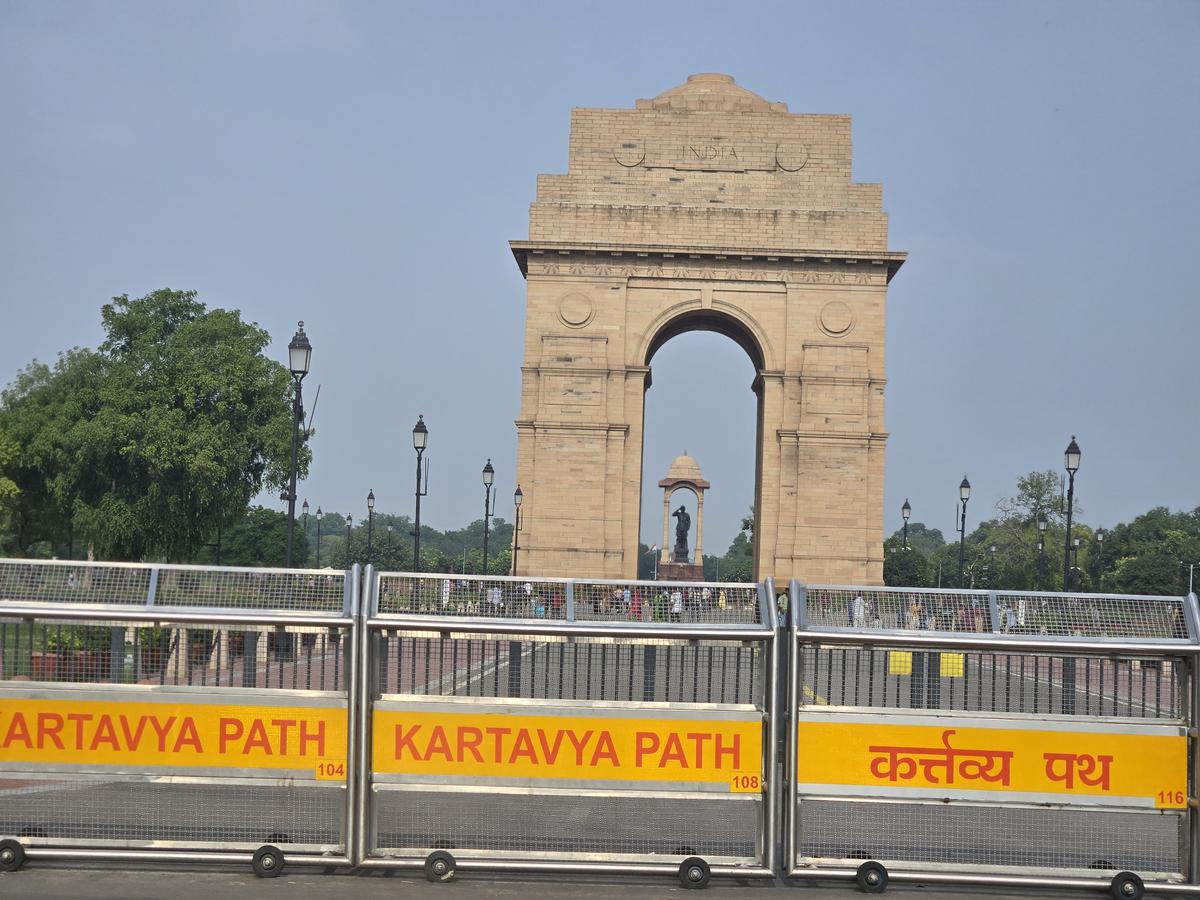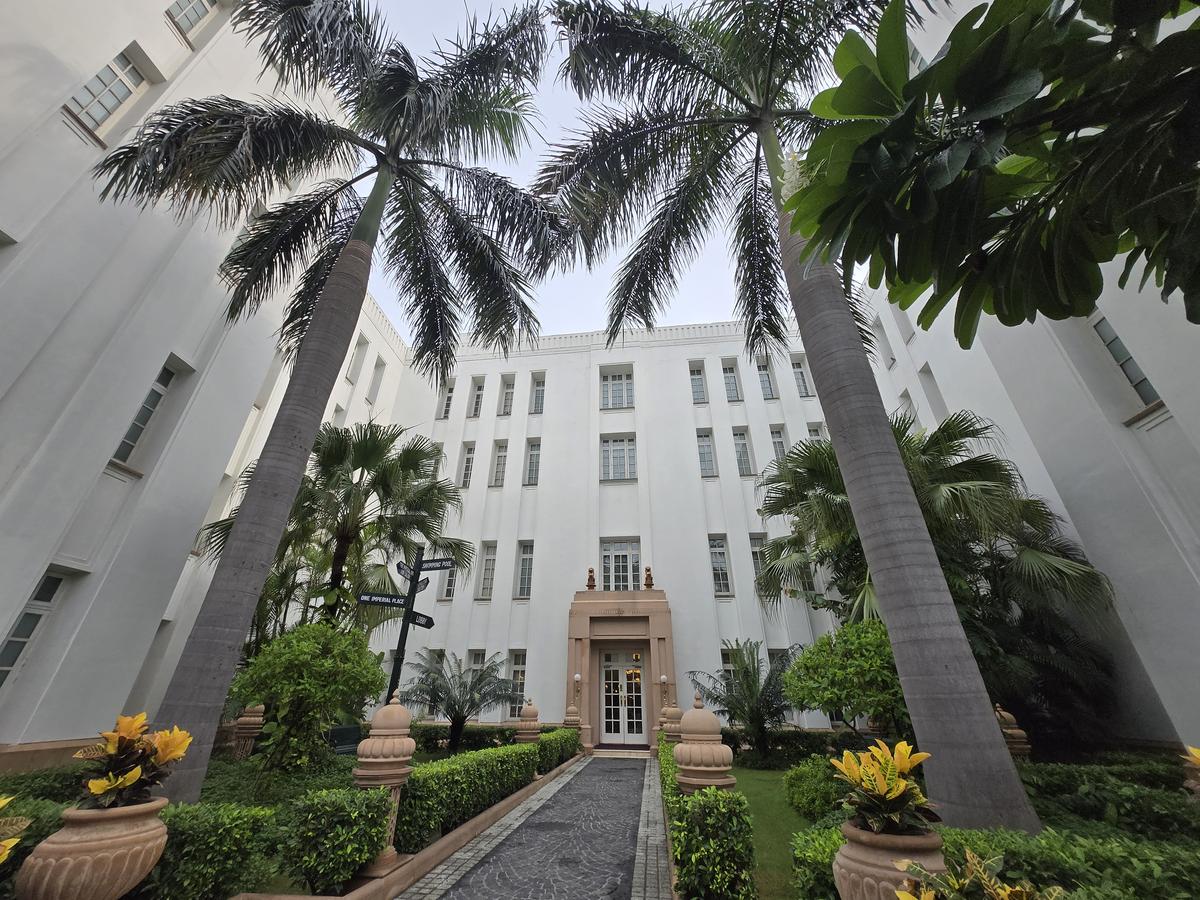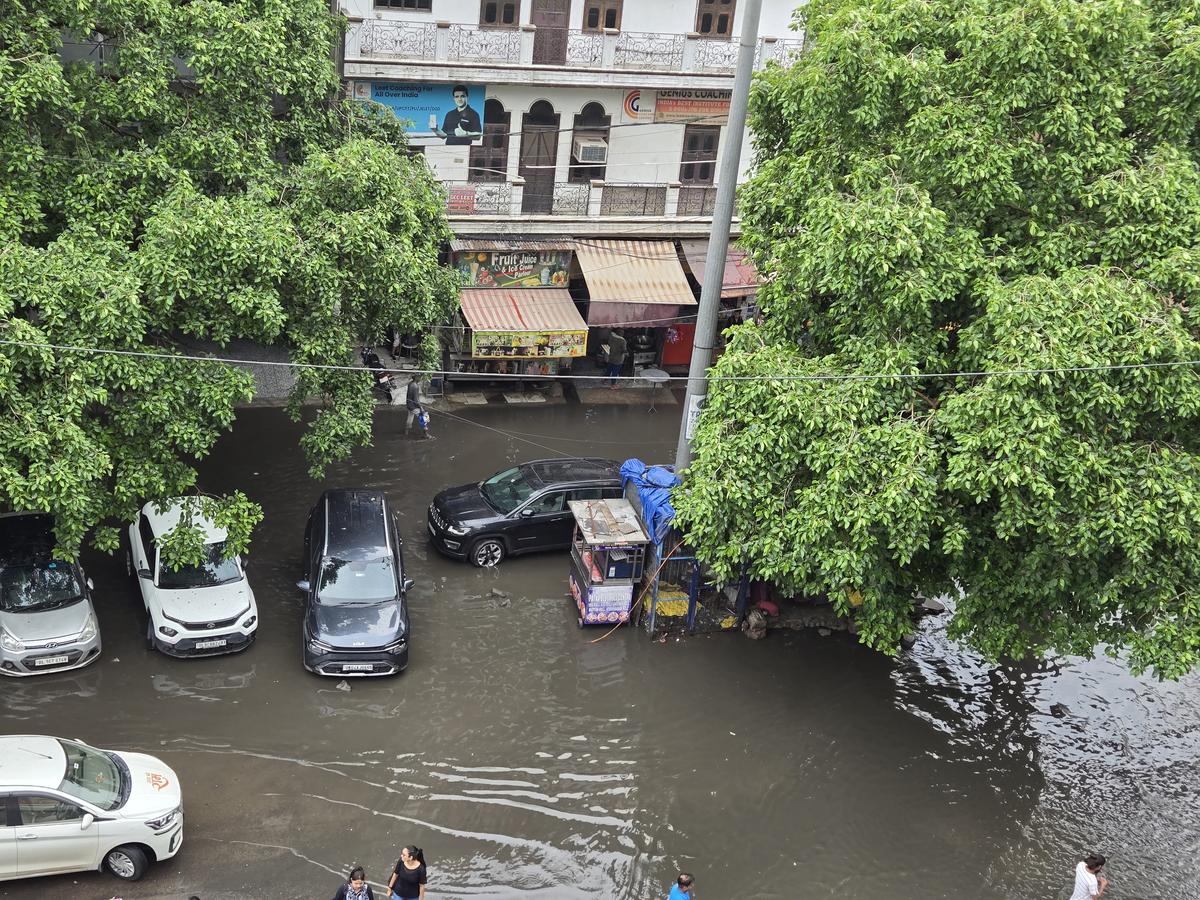Samsung’s sixth generation foldable phone Galaxy Z Fold 6 comes with refinements over its predecessor Galaxy Z Fold 5, but it must compete with new entrants in the space like the Vivo X Fold 3 Pro which has proved its worth recently. The South Korean major bets on its ecosystem and new advancements in the field of generative AI to give an edge to the Galaxy Z Fold 6.
We have used the phone for a month and analysed what has really improved in it. Is it worth shelling out ₹1.65 lakh for it?
Design
Samsung has retained the form factor of its predecessor in Galaxy Z Fold 6. However, it feels more relaxed as the uniform weight distribution does not strain the hand while usage. The Fold 6 weighs 239 grams whereas Vivo’s X Fold 3 Pro was at 236 grams. The matte aluminium frame offers a better grip and is not slippery either. The phone feels sturdy in hand.

Samsung Galaxy Z Fold 6 design
| Photo Credit:
Haider Ali Khan
The improved hinge gives it a solid appearance overall. Both the screens close flat without any gap in between. Flexibility is equally ensured at various angles as it opens completely. The IP48 rating makes it a long running partner. Although the camera module at the back makes it uneven on a flat surface, however, it ensures a better air flow beneath for thermal management. It does heat on extensive camera usage and video call.
(For top technology news of the day, subscribe to our tech newsletter Today’s Cache)
Display
The Galaxy Z Fold 6 has a 6.3-inch Dynamic 2x LTPO AMOLED cover screen with 120 Hz refresh rate and 2,600 nits peak brightness. It is protected by Corning Gorilla Glass Victus 2. The cover screen gives a vibrant output with a better dynamic range. Easily visible under sun, it drives the maximum interaction with the phone during the day with its 410 pixels per inch. Compared to it, the X Fold 3 Pro comes with a 6.53-inch screen and 4,500 nits of peak brightness.

Galaxy Z Fold 6 display
| Photo Credit:
Haider Ali Khan
The main display features similar refresh rate and brightness level as the cover display but it is 7.6-inch in size (same as Fold 5). The adaptive refresh rate now goes down to 1 Hz from 60 Hz earlier which helps in battery efficiency. With its 1856 x 2160 pixels resolution, the main display is a treat to interact with. It’s so addictive that you will not like other screens. The content and photos emerge beautifully on it. The crease is going nowhere but has improved from its last generation. In comparison, the X Fold 3 Pro has an 8.03-inch AMOLED display with 2,480 x 2,200 resolution.
Processor
Samsung has used the top-end mobile platform from Qualcomm, the Snapdragon 8 Gen 3. It gets 12 GB RAM and up to 1 TB storage. The combination gives enough strength to this multitasking phone to run daily applications, do editing and play games. The same processor powers Z Flip 6 as well and all other major flagships launched this year including Vivo’s X Fold 3 Pro.
Gen AI
The SD 8 Gen 3 is suited for the AI tasks as well which Samsung is marketing heavily in its new foldable phones. The new ‘Galaxy AI’ gives you additional options to play with your photos, videos, make your day at work easier with call recording, summarising it, help in taking notes, proof reading, PDF assist, enables live call transcription, drafts mail and has features like circle to search and Google Lens integration. It also assists in creating full images from rough sketches and recreate selfies in artistic styles.
There’s Portrait Studio that lets you create photos into 3D cartoon, watercolour painting, etc. The Composer feature helps to generate text for social media and messages using prompts. The Interpreter works here as well which can be a handy tool in foreign lands where you can communicate real time using inner and cover display with translation.
OS
The Galaxy Z Fold 6 runs One UI 6.1.1 based on Android 14. It allows you to run up to 8 apps on the screen at once. The good part is that Samsung got you covered with 7 years of OS and security updates guaranteed in Fold 6.
Camera
Samsung continues with the same optical set up in Galaxy Z Fold 6 as its predecessor. It holds a 50 MP main camera along with a 12 MP ultrawide sensor and a 10 MP telephoto lens at rear. On the contrary, Vivo offered 50 MP (main) lens + 50 MP (utrawide) + 64 MP (telephoto) in X Fold 3 Pro.

Galaxy Z Fold 6 camera sample
| Photo Credit:
Haider Ali Khan
The phone performs well in whatever situation you are in. So, it is not really about the changes in the hardware, but the software optimisation is better. The AI gives you additional options for editing.

Galaxy Z Fold 6 camera sample
| Photo Credit:
Haider Ali Khan
Daylight shots have enough detailing to share without too much post processing. The colours are retained properly, and sharpness comes out nicely. Rarely any noise is observed during the day. The image stabilisation ensures enough amount of data in a frame even if you or the subject is in motion.

Galaxy Z Fold 6 camera sample
| Photo Credit:
Haider Ali Khan
The ultrawide camera has been tuned to offer much better colour retention this time. The dull lighting scenes come alive with it. It generates photos with good colour accuracy and hence most of the times they appear vivid and punchy.

Galaxy Z Fold 6 camera sample
| Photo Credit:
Haider Ali Khan
The telephoto lens with 3x optical zoom does a decent job. Up to 10x, digital zoom, it holds detail and brings out desired results, but it goes down as we go further. We believe that the Galaxy S24 Ultra offered a better zoom.
On the front, the Galaxy Z Fold 6 has two selfie lenses; a 10 MP lens on the cover screen while the second on the inner display offers 4 MP resolution. The main lens shows good results in day while some noise can be seen during the night which is quite natural. The 4 MP lens is rarely used outside. However, it does okay in the day but struggles during evenings. The inner selfie lens has tremendous scope for improvement.
The Vivo X Fold 3 Pro had two 32 MP lenses at cover and inner display.
Battery
Samsung used the same 4,400 mAh battery in Galaxy Z Fold 6 as its former partner. Good enough to last a day given that it uses the latest processor and has a better dynamic refresh rate. For gaming and binge watching, you do require to plug it twice in a day.
If you interact more with the main display, the battery life may change but if the majority is on cover, then it can last more than a day.
Charging takes time as it supports 25W wired charging and the charger is not a part of the box. You need more than an hour to charge it completely but if it has around 30% power, then it takes about 30 minutes to reach 80%.
Meanwhile, its competitor, Vivo X Fold 3 Pro has a 5,700 mAh battery and a 120W charger bundled in the box.
Verdict
Samsung presents a refined foldable phone in the form of the Galaxy Z Fold 6 where it has mostly made incremental changes. The inclusion of Galaxy AI makes it even more productive and helps users to manage through the day with better assistance on many fronts, but it does require human moderation. The actual hand feel, and durability are a big asset on top of the improved gen AI features.
The Galaxy Z Fold 6 offers a more vibrant display compared to its predecessor, and an enhanced overall performance with the new processor. The camera does impress with its genuine intent. The crease is minimal, but it is not going anywhere.
However, the phone price starts at ₹1,64,999 for 12 GB + 256 GB, which is ₹10,000 higher than Z Fold 5. Samsung is the leader in the foldable space and now into its sixth generation and therefore it must try to make foldables accessible to a larger audience if not all.
The Galaxy Z Fold 6 is placed against the Vivo X Fold 3 Pro which retails at ₹1,59,999.




